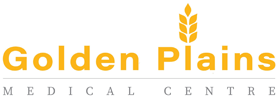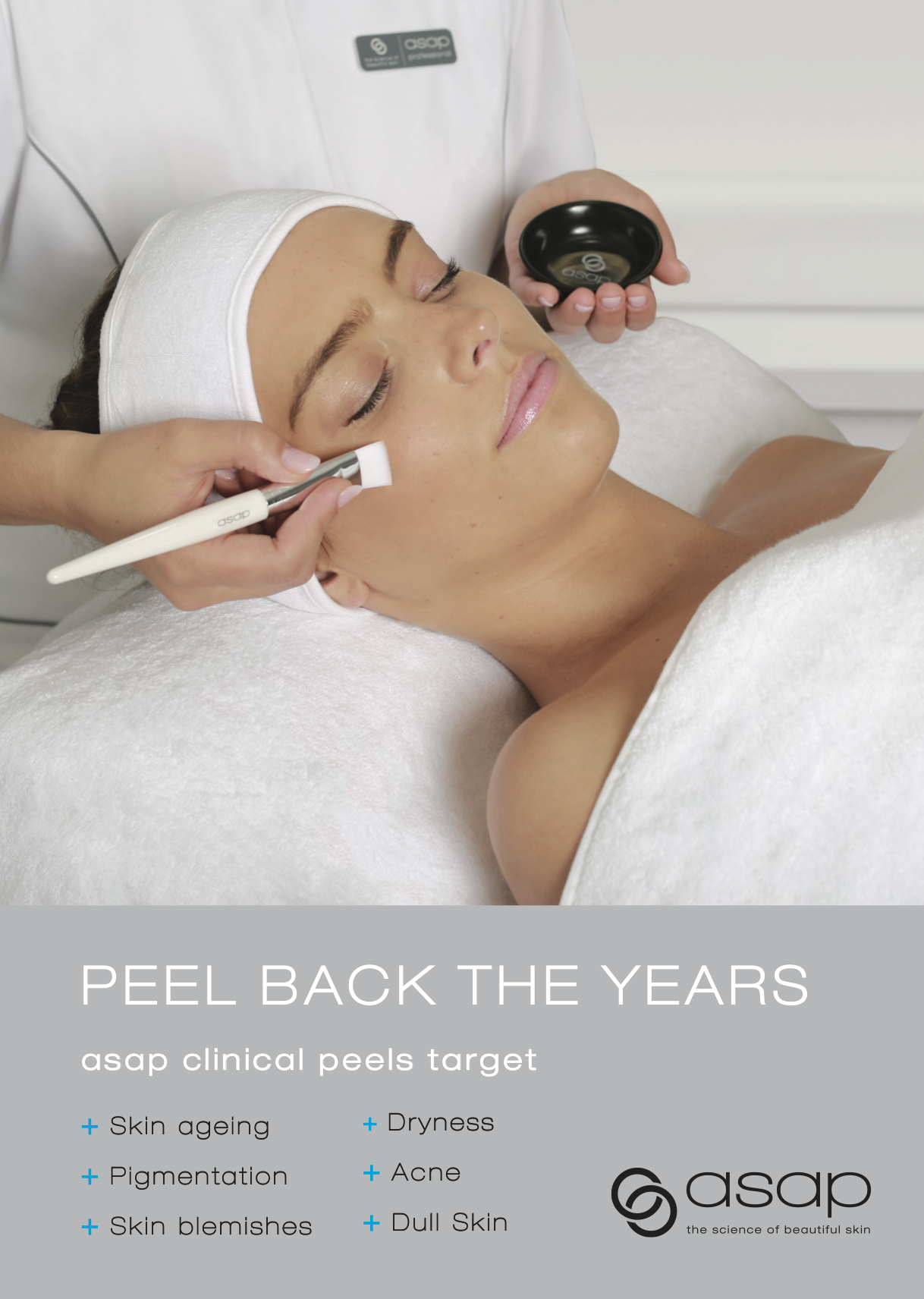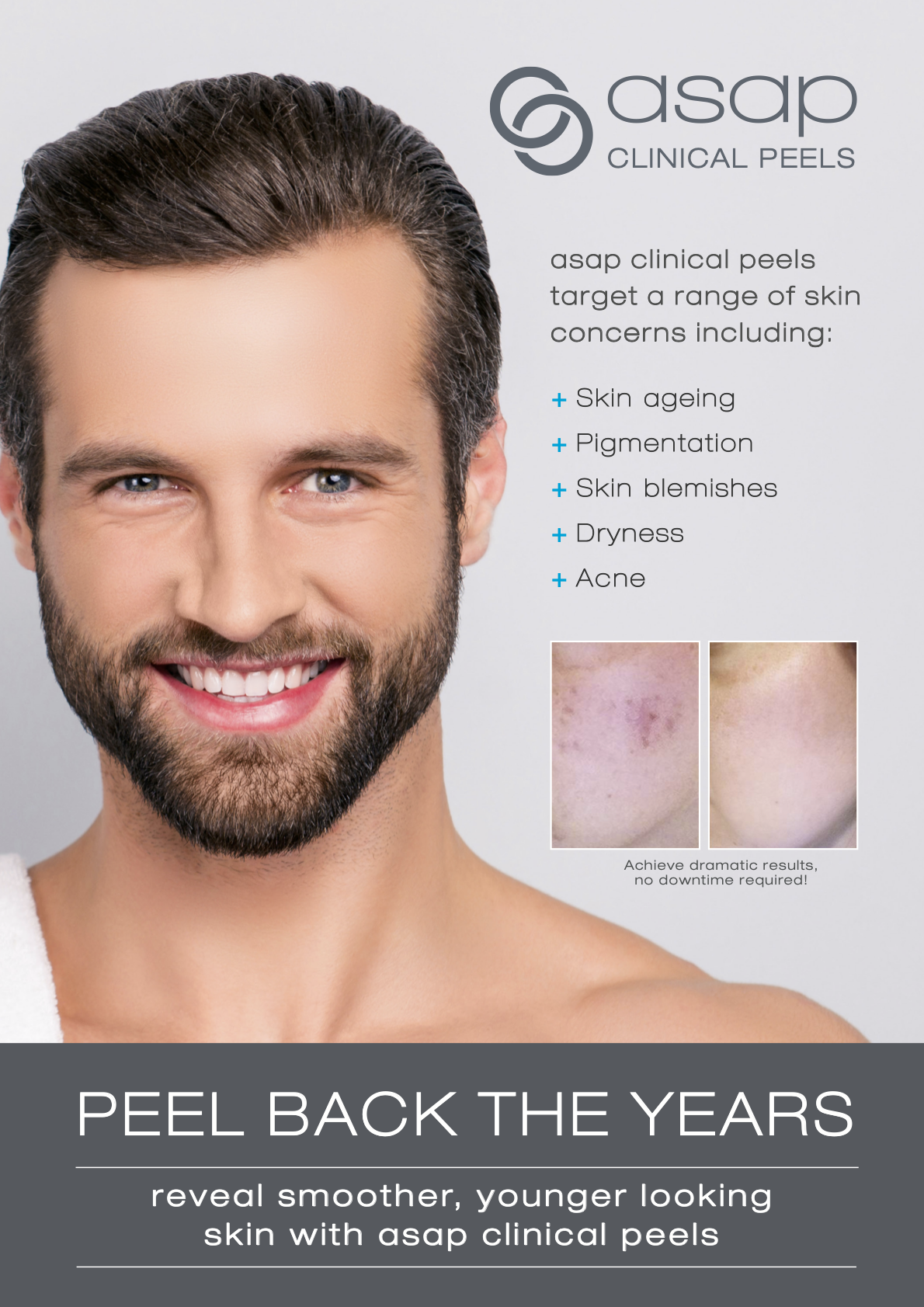Clinical Peels
Clinical Peels
What Benefits Can I Expect from a Clinical Peel?
Clinical Peels are wonderfully diverse treatments that can be tailored to suit different skin types and treat an array of skin concerns, including:
- Dehydration
- Sun damage
- Pigmentation
- Fine lines & wrinkles
- Acne
- Breakouts/congestion
- Thickened skin texture
- Dull/sallow skin
- Redness
- Rosacea
- Scarring & acne scarring
- Post Inflammatory Hyperpigmentation
- Uneven skin tone
- Loss of elasticity
- Enlarged pores
How Do Clinical Peels Work?
Peels work by utilising gentle exfoliating agents to loosen the intercellular ‘glue’ that holds dead skin cells to the surface of the skin, increase the natural exfoliation process that takes place beneath the skin's surface, stimulate the regeneration of new, healthy skin cells to resurface the skin, and deeply cleanse the pores to ultimately achieve a brighter, refined skin texture and complexion.
What Type of Peel is Right for Me?
Peels vary in strength and in their particular ingredients and therefore can be tailored to suit almost every skin type and condition. So, no matter what your individual concerns are, there will be a peel just right for you! Of course, before commencing any peel treatment, your skin must be assessed to determine which peel is exactly the right fit, and more often than not, the peel used will change each time you have a treatment.
How Many Treatments Will I Need?
The number of treatments required will vary depending on the condition being treated and its severity. Beautiful results can be enjoyed from just a one-off peel treatment, an ideal treatment option when maintaining general skin health or when preparing for a special occasion or event. Best results will be achieved through multiple treatments, we recommend undergoing a program of 6 peels, particularly when the goal is to correct specific skin concerns.
How Do I Prepare My Skin for a Peel Treatment?
For best possible results, it is recommended to use an appropriate cosmeceutical home care regime for 2 weeks prior to commencing a peel treatment. Avoid excess UV exposure, taking extra caution not to obtain a sunburn before any peel, as this will make treatment impossible until the skin fully heals. Peels cannot be performed if there are any open wounds in the area, cold sores, or if you have been taking Roaccutane medication within the last 6 months. Pregnancy and breastfeeding are contraindications to some peels, but not all. Peels cannot be performed if the area to be treated has been waxed on the same day.
How Long Does a Peel Take?
Clinical peel treatments can be quick and easy and may only take around 30 minutes to complete. A peel in this category is the perfect ‘lunch time’ treatment as you are in and out of the clinic quickly and can resume your normal daily activities straight away.
If your Clinical peel is within the Performance Treatment category, your treatment will take between 45-60 minutes, depending on the customisation of your treatment.
If you are pairing an LED treatment with your peel, you will be in the clinic for an extra 20 minutes. If you are new to the clinic, we prefer to start with a skin consultation, which takes approximately 30 minutes.
How Will a Peel Feel on My Skin?
Peels are painless, enjoyable treatments. When most peel solutions are applied to the skin, you will experience a tingling sensation and often some gentle warming of the skin, this typically settles down a few minutes after application. Some peels, even though triggering stimulation beneath the skin’s surface, will not create any detectable sensation on the skin's surface. Some of the Performance treatment peels include infusion with Sonophoresis and/or massage.
How Will I Look After a Treatment?
Typically, a slight redness will be noticed immediately following the treatment, this will naturally dissipate over the course of 1-2 hours. Some clients may notice slight dryness or flakiness on the skin's surface for a few days following the peel. Generally, this is only an outcome following a stronger peel; however, more sensitive or dry skins can experience this result following a low-level peel also.
How Do I Care for My Skin After a Peel Treatment?
Following a peel, your skin will be a bit more vulnerable than usual, so it is important to follow after-care instructions.
After-Care Instructions:
- Apply 50+ SPF protection daily
- Avoid excessive UV exposure
- Do not apply active serums, such as Retinol, AHAs, BHAs, or any form of exfoliation for 3-5 days following treatment
- Avoid picking or scratching any dry or flaky skin
- Avoid heavy exercise, hot showers, spas, and saunas for 1-2 days following treatment
- Apply recommended aftercare products for 3-5 days following treatment
How Often Can I Have a Peel?
How frequently you can have a peel will depend on what skin conditions are being treated and the strength of the peel. Typically, you can have a peel every 2-4 weeks. When starting out, we recommend coming in fortnightly to maintain optimum results.
Should I Have Any Other Treatments with My Peel?
Peels can be performed as a stand-alone treatment, but optimum results will be achieved through Combination Therapies. By pairing your peel with other treatments and modalities, such as LED Light Therapy, we can boost the results of the peel, calm redness and inflammation, speed up the natural wound healing process, and boost collagen and elastin production. When paired with other treatments, such as Laser Genesis, a peel can be included as an upgrade for a discounted price, providing an effective plumping and skin rejuvenating treatment.
Peel Fun Fact
Skin peeling is a relatively new term used for this quick and easy clinical treatment, but did you know this method dates back to the ancient world? Cleopatra, who was a symbol of beauty and known for her flawless skin, used to bathe in milk. The fermented milk would act like a modern-day peel to stimulate exfoliation and renewal of the skin. The main ingredient used in this case was lactic acid, a derivative of fermented milk, which is one of the main ingredients we still use in peels today!



